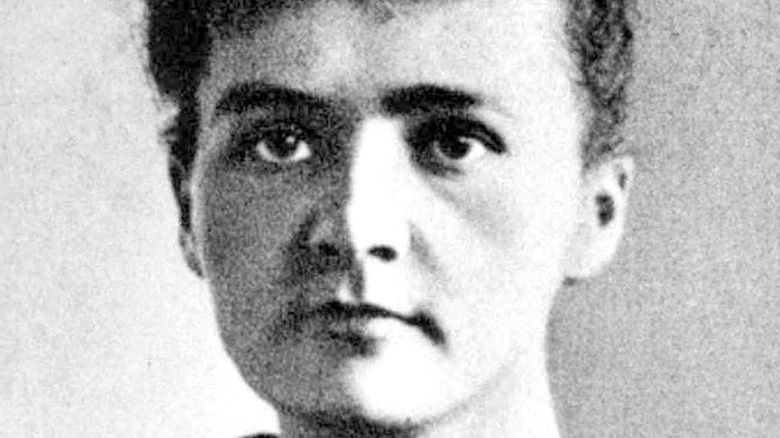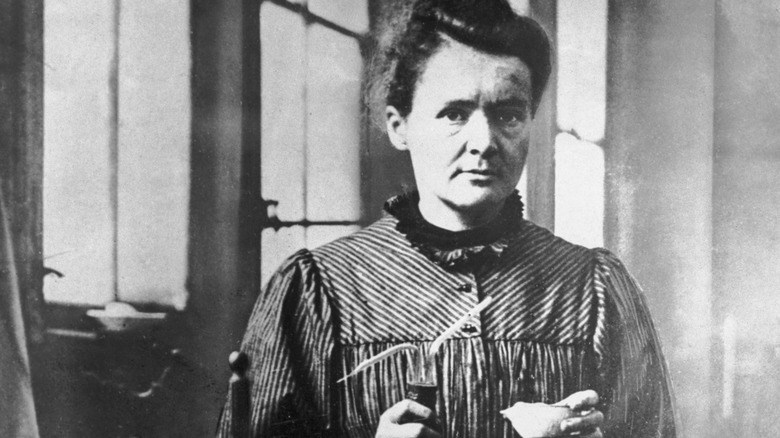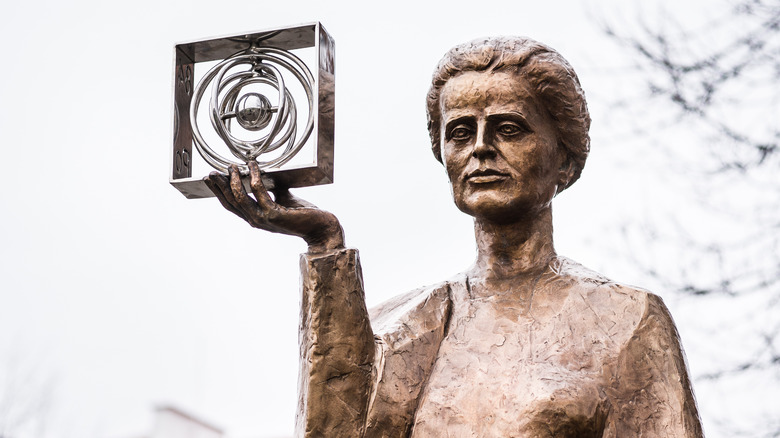The Scandal That Almost Destroyed Marie Curie's Career
As some of the world's most distinguished scientists found out, great fame and success rarely comes easily. Isaac Newton, for instance, feuded with several other eminent minds during his lifetime. According to the Royal Society, he is suspected of destroying a portrait of one such rival, Robert Hooke, after the pair squabbled in the late 1680s (over just how much Hooke had added to the work on gravity). It's not just about the genius, it's about the ego too.
Marie Curie is another of the most distinguished scientists the world has ever seen, and her career certainly wasn't a picnic either. The first-ever female winner of a Nobel Prize her revolutionary work in the field of radioactivity famously led to her death, of aplastic anemia, per Britannica.
Many may not know, however, that her distinguished career was almost brought to a halt, and in the most unceremonious fashion. Here's the story of the scandal that could have destroyed her reputation.
Marie Curie and Paul Langevin, sitting in a tree
Marie Curie's husband, Pierre, died in April of 1906. It was during this tragic time that she resolved to distinguish herself. Not as one-half of a remarkable husband-and-wife team — her husband help shape physics as we know it today (per Biography) — but as a brilliant and pioneering scientist in her own right. There's no denying that she accomplished just that, nor that she attracted a great deal of controversy along the way.
The American Institute of Physics explains that five years after her husband's death, a scandal arose involving her and one Paul Langevin. He was a fellow scientist who had reportedly relocated to the French capital alone, his relationship with his wife seeming to be damaged beyond repair. Curie and Langevin developed a working relationship and attended a Belgian scientific conference in 1911 with other big names in their field — Albert Einstein among them.
It was believed that the pair had become much closer beyond a professional level. In "Marie Curie: A Life," Susan Quinn writes, "by mid-July of 1910, all the evidence suggests, Marie and Paul had become lovers. On July 15, they rented an apartment together near the Sorbonne."
A forbidden love
This was no simple infatuation, either. The American Institute of Physics reports that scandalous letters Marie Curie had sent Paul Langevin emerged in the newspapers during the 1911 conference. According to the Independent, it had been Mrs. Langevin herself who discovered the salacious notes and shared them with the journalists of France.
What had Curie written that was so controversial? Per Susan Quinn's "Marie Curie: A Life," one love letter proclaimed that the two scientists were "linked by a profound affection that we must not allow to be destroyed." These words suggest both the depth of their feelings for each other and Curie's acceptance of the fact that the relationship could have serious implications for them.
The Independent goes on to say that Curie implored Langevin to marry her, but that he and his wife would never divorce. He did, however, reportedly duel a journalist who had shared the story, in defense of Curie's honor. Fortunately for these two brilliant scientists, their reputations were able to weather this storm.


